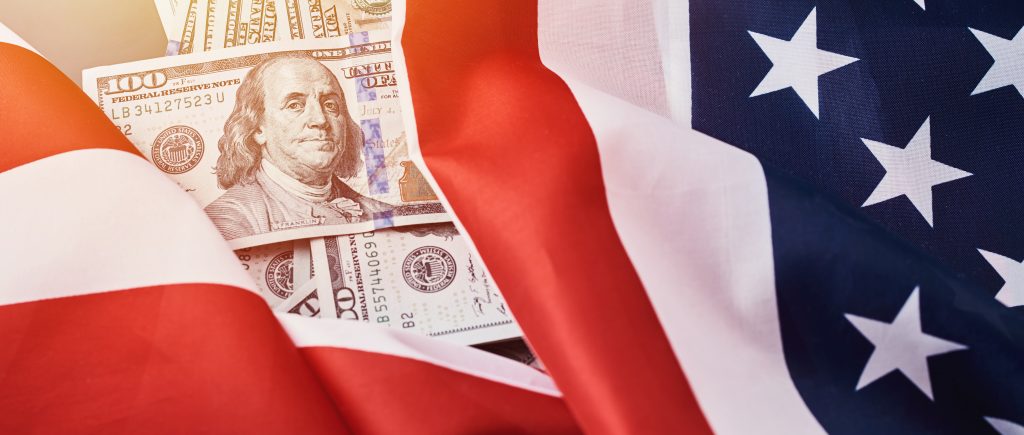The US government is on the verge of a temporary shutdown starting this Sunday, October 1st. Once again, Democrats and Republicans in the world’s largest economy are in a deadlock over how to allocate fiscal funds.
Looking back, since 1981, the US government has partially suspended operations 14 times. The most recent shutdown occurred for a record 35-day period between December 2018 and January 2019. During that time:
- The US dollar (as measured by USDInd) dropped by 1.2%
- Gold prices rose by 3.8%
- SPX500_m surged by 10.3%
A significant aspect of this prior shutdown was its alignment with the Fed’s final interest rate hike in that cycle. In December 2015, the Fed raised US interest rates for the first time since the global financial crisis. In December 2018, the US government shutdown lasted 35 days, marking the Fed’s last rate hike of that cycle initiated in December 2015. By July 2019, the Fed reversed its course, beginning rate cuts that eventually led to near-zero rates at the onset of the global pandemic in 2020.
Will the Fed follow a similar strategy during the upcoming US government shutdown? Probably not, especially given that core US inflation stood at 4.1% in August, well above the Fed’s 2% target. Persistent inflation suggests the possibility of another Fed rate hike or, at the very least, a prolonged period of elevated US interest rates.
The financial markets are currently fixated on two key questions:
- Can the Fed manage one final 25-basis point rate hike by the end of the year? Market predictions put the likelihood at 53%.
- How long will the Fed maintain interest rates at this elevated level?
Even before the imminent threat of a government shutdown, economists and market analysts had been preparing for a potential economic slowdown or even a recession in the United States. Goldman Sachs has forecasted that the shutdown might result in a 0.2 percentage point decline in US GDP per week.
A government shutdown in the US has various implications for the economy:
- Employee Pay: Many public employees, from national park staff to museum workers, will face salary stoppages, affecting their spending power and potentially reducing consumer demand.
- Private Companies: Businesses relying on government contracts could lose substantial revenue, with estimates reaching almost $2 billion per day. This loss impacts their operations, potentially leading to reduced hiring and investments.
- Delayed Economic Data: Critical economic data releases, like the US nonfarm payrolls report and consumer price index, might be delayed. This lack of timely information can create uncertainty in financial markets and affect investment decisions.
- Fiscal Spending: A prolonged shutdown deprives the economy of essential government spending, impacting sectors relying heavily on public contracts and funding.
These factors indicate that an extended government shutdown could heighten the risk of a US recession. In such a scenario, the likelihood of an additional interest rate hike by the Fed diminishes, or there might even be pressure for a rate cut. Such an economic outlook would significantly influence global financial markets.
Potential Scenarios:
In the event of an anticipated government shutdown starting from October 1st, if it persists for an extended period, a similar market reaction to that of 2018 is expected:
- USD Index: It may face challenges in rising and could even experience a moderate decline as the shutdown continues. However, the US dollar’s fall might be limited, possibly hovering around the 105.0 region. This is contingent upon US yields remaining notably higher than those of major peers like Europe, the UK, and Japan.
- Gold: The possibility of spot gold rising above $1900 seems likely, particularly if the US dollar weakens, which would favor gold bulls expecting higher prices. This ease in the US dollar would coincide with market expectations scaling back on bets for a final Fed rate hike.
Gold often demonstrates an inverse relationship with US interest rates, yields, and the dollar; when these factors decline, gold prices tend to rise, and vice versa.
Additionally, increased demand for traditional safe-haven assets, including gold, could further support the precious metal’s recovery.
 Noor Trends News, Technical Analysis, Educational Tools and Recommendations
Noor Trends News, Technical Analysis, Educational Tools and Recommendations





